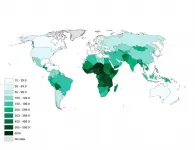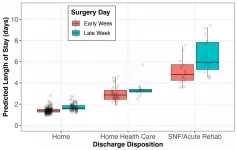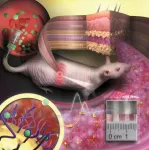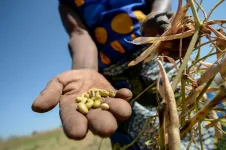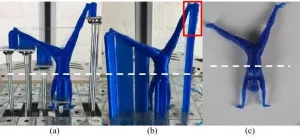While COVID-19 has severely impacted everyone's daily lives, its societal and economic impact will be present for generations. It has prompted urgent responses in many sectors that could be models for rapidly developing real-world solutions that can improve efforts focused on prevention of chronic health conditions. Dramatic transformation in health care research is needed to align with the disruption of cardiovascular care and heart health caused by the COVID-19 pandemic.
The first article, "Avoiding the Coming Tsunami of Common, Chronic Disease: What the Lessons of the COVID-19 Pandemic Can Teach Us," is authored by Robert M. Califf, M.D. He is the head of clinical policy and strategy at Verily Life Sciences and Google Health, a former commissioner of the U.S. Food and Drug Administration, former vice chancellor for health data science at Duke University School of Medicine and the founding director of the Duke Clinical Research Institute.
In his article, Califf urges swift and comprehensive action to avoid the dramatic rise in chronic health conditions, particularly cardiometabolic disease, that are to be expected as a result of COVID-19. Three of the top 10 leading causes of death in the U.S., cardiovascular disease, stroke and type 2 diabetes, are linked to cardiometabolic disease.
He calls for critical shifts in the U.S. health care system to include universal health care, public health and research strategies that incorporate "big data," and improved health data sharing that can inform more effective and efficient prevention and treatment protocols and programs across society."
Califf also notes the impacts of structural racism and that social determinants of health must be incorporated at all levels of research, clinical care and within communities and society at large for equitable, systemic improvement in health outcomes to be realized. He advocates for universal access to broadband internet that could increase access to medical information, digital support programs and telehealth appointments with health care professionals.
He recommends more real time, in-depth tracking of chronic health conditions similar to the rapid data dashboards that were implemented to track COVID-19 cases, hospitalizations and deaths. With better information accessible more quickly, strategies to prevent and treat chronic health conditions can be measured and adapted accordingly.
Califf also proposes a new effort called "Operation Warp Evidence," modeled after the rapid COVID vaccine effort "Operation Warp Speed," to be a speedy, prioritized clinical trial infrastructure that assesses the risks and benefits of new therapies compared to existing therapies for chronic health conditions. This would allow the vast pool of clinical trials to be more focused on immediate interventions that can improve prevention, care and outcomes.
A number of Califf's comments align with the American Heart Association's November 2020 Presidential Advisory, "Call to Action: Structural Racism is a Fundamental Driver of Health Disparities," in which the Association outlined an aggressive and meaningful plan to address structural inequity to eliminate disparities, remove barriers and increase diversity, equity, access and inclusion for all. They also echo the Association's findings in the recent Heart Disease and Stroke Statistics - 2021, showing that COVID-19 will likely influence cardiovascular health and mortality rates for years to come.
The second article, titled "Incremental Change versus Disruptive Transformation: COVID-19 and the Cardiovascular Community," is from Nanette K. Wenger, M.D., FAHA, professor of medicine in the division of cardiology at Emory University School of Medicine, consultant to the Emory Heart and Vascular Center, founding consultant to the Emory Women's Heart Center and director of the Cardiac Clinics and Ambulatory Electrocardiographic Laboratory at Grady Memorial Hospital in Atlanta.
Wenger has been at the forefront of advancing patient care for the last 60-plus years, and she was among the first physicians to focus on coronary heart disease in women and to evaluate the different cardiovascular risk factors, symptoms and conditions for women compared to men. She was one of the first women to graduate from Harvard Medical School and has received numerous accolades throughout her distinguished career for her pioneering work on cardiovascular disease in women. Notably, she was an author of the Association's 2007 Guidelines for Cardiovascular Disease in Women, and she has received multiple awards from the Association including the Gold Heart Award, the Lifetime Achievement Award and, most recently, the 2020 Eugene Braunwald Academic Mentorship Award.
Wenger's article documents her perspective that the U.S. has been experiencing three simultaneous pandemics: COVID-19, economic disruption and social injustice. The COVID-19 pandemic magnified societal and health care disparities; millions of people lost jobs; numerous industries and small businesses have been financially decimated; and every aspect of scientific research and medicine has been altered - education, research and clinical care. Yet, she acknowledges there were numerous successes and critical shifts, such as the quick adoption of telemedicine, that can lead to broad transformation in health care delivery and potentially improve access to care for more patients.
Disparities were revealed to include patient hesitancy to receive care. Many improvements achieved over the past five decades in acute coronary and stroke care were compromised because patients self-quarantined to avoid the emergency room and exposure to COVID-19.
While COVID-19 drove research urgency to understand the disease, its course, treatments and vaccines, it opened the door for successful new public-private partnerships that realized rapid results. Wenger asks, "Could these be a model for future advancements?"
Academic education moved to virtual settings, many labs were closed and some programs fast-tracked students to join the pool of professionals providing emergency patient care. Career opportunities for medical students and professionals shifted in unexpected ways, and women scientists have been disproportionately affected by quarantines because of historic childcare responsibilities. "What will the long-term effects be on science and discovery?" Wenger noted.
In scientific publishing, COVID-19 research was accelerated through the peer-review process to meet the pressures and yielded an effective model for greater efficiencies that should be continued. Health registries that were implemented quickly to track COVID-19 patients could be expanded to include cardiovascular disease measures, treatment and outcomes, particularly since there are still so many unknowns about long-haul COVID and lasting cardiovascular effects.
The recognition of social injustice and its correlation to poorer health outcomes were unmasked by the disproportionate COVID-19 deaths in African American, Hispanic/Latino, American Indian/Alaska Native and Pacific Islander communities this past year. COVID-19 magnified these disparities and has catalyzed critical commitments to dismantle structural racism, as addressed in the previously mentioned AHA 2020 Presidential Advisory.
Wenger concludes, "The convergence of all of these issues, their impact on cardiovascular disease and care, presents unique opportunities for transformation in cardiovascular medicine, clinical care and research. We must remain focused and flexible during this unprecedented time to maximize innovation and achieve equity for all."
INFORMATION:
The Association has made significant strides in a number of important areas noted by Wenger. Within weeks after the pandemic began, the Association established the COVID-19 CVD Registry Powered by Get With The Guidelines® to capture data on patient clinical characteristics, medications, treatments, labs, vitals, biomarkers and outcomes for adult patients hospitalized with COVID-19 including patients without a history of cardiovascular disease or stroke. Through January 2021, more than 37,000 deidentified patient records and over 135,000 lab reports from more than 160 hospital sites across the U.S. are available in the registry. The Registry will continue to be modified and strengthened and is a powerful repository to guide advancements.
As early pandemic data emerged and confirmed fewer patients seen in emergency rooms for heart attacks and strokes, the Association launched the Don't Die of Doubt public awareness campaign in July 2020. Available in both English and Spanish, the campaign focused on reminding Americans that even during the pandemic, the hospital is still the safest place to be if experiencing symptoms of a heart attack or stroke.
Last month, the editors of Circulation: Cardiovascular Quality and Outcomes, an Association journal, published a statement detailing specific instructions for scientific authors to guide consistent framing, terminology and methods aligned with established best practices for scientific research on racial and ethnic disparities in health. The guidance is under review for adoption by the editorial teams of the Association's portfolio of 11 additional scientific journals: Circulation; Stroke; Hypertension; Journal of the American Heart Association; Arteriosclerosis, Thrombosis, and Vascular Biology; Circulation Research; Circulation: Arrhythmia and Electrophysiology; Circulation: Genomic and Precision Medicine; Circulation: Heart Failure; Circulation: Cardiovascular Imaging; and Circulation: Cardiovascular Interventions.
The Association is about to launch a new campaign, Doctor, It's Been Too Long, to encourage everyone to return to their doctors and health care professionals for routine care during the pandemic.
Additional Resources:
Available multimedia is on right column of release link -
https://newsroom.heart.org/news/covid-19-tsunami-of-chronic-health-conditions-expected-research-health-care-disrupted?preview=4394d57a6064c78eb1a7e077b7f2a8b7
After April 6, 2021, view the manuscripts online:
https://www.ahajournals.org/doi/10.1161/CIRCULATIONAHA.121.053461 and https://www.ahajournals.org/doi/10.1161/CIRCULATIONAHA.121.053860
COVID-19 CVD registry details disparities among patients hospitalized with COVID
American Heart Association coronavirus (COVID-19) resources for the public
American Heart Association coronavirus (COVID-19) resources for health care professionals
American Heart Association announces COVID-19 patient data registry
More than $230 million committed to support equitable health for all people
New guidance addresses structural racism in racial and ethnic disparities research
Don't Die of Doubt
Doctor, It's Been Too Long
American Heart Association COVID-19 Newsroom
Follow AHA/ASA news on Twitter @HeartNews
Follow news from the AHA's flagship journal Circulation @CircAHA
Statements and conclusions of studies published in the American Heart Association's scientific journals are solely those of the study authors and do not necessarily reflect the Association's policy or position. The Association makes no representation or guarantee as to their accuracy or reliability. The Association receives funding primarily from individuals; foundations and corporations (including pharmaceutical, device manufacturers and other companies) also make donations and fund specific Association programs and events. The Association has strict policies to prevent these relationships from influencing the science content. Revenues from pharmaceutical and biotech companies, device manufacturers and health insurance providers are available here, and the Association's overall financial information is available here.
About the American Heart Association
The American Heart Association is a relentless force for a world of longer, healthier lives. We are dedicated to ensuring equitable health in all communities. Through collaboration with numerous organizations, and powered by millions of volunteers, we fund innovative research, advocate for the public's health and share lifesaving resources. The Dallas-based organization has been a leading source of health information for nearly a century. Connect with us on heart.org , Facebook , Twitter or by calling 1-800-AHA-USA1.
